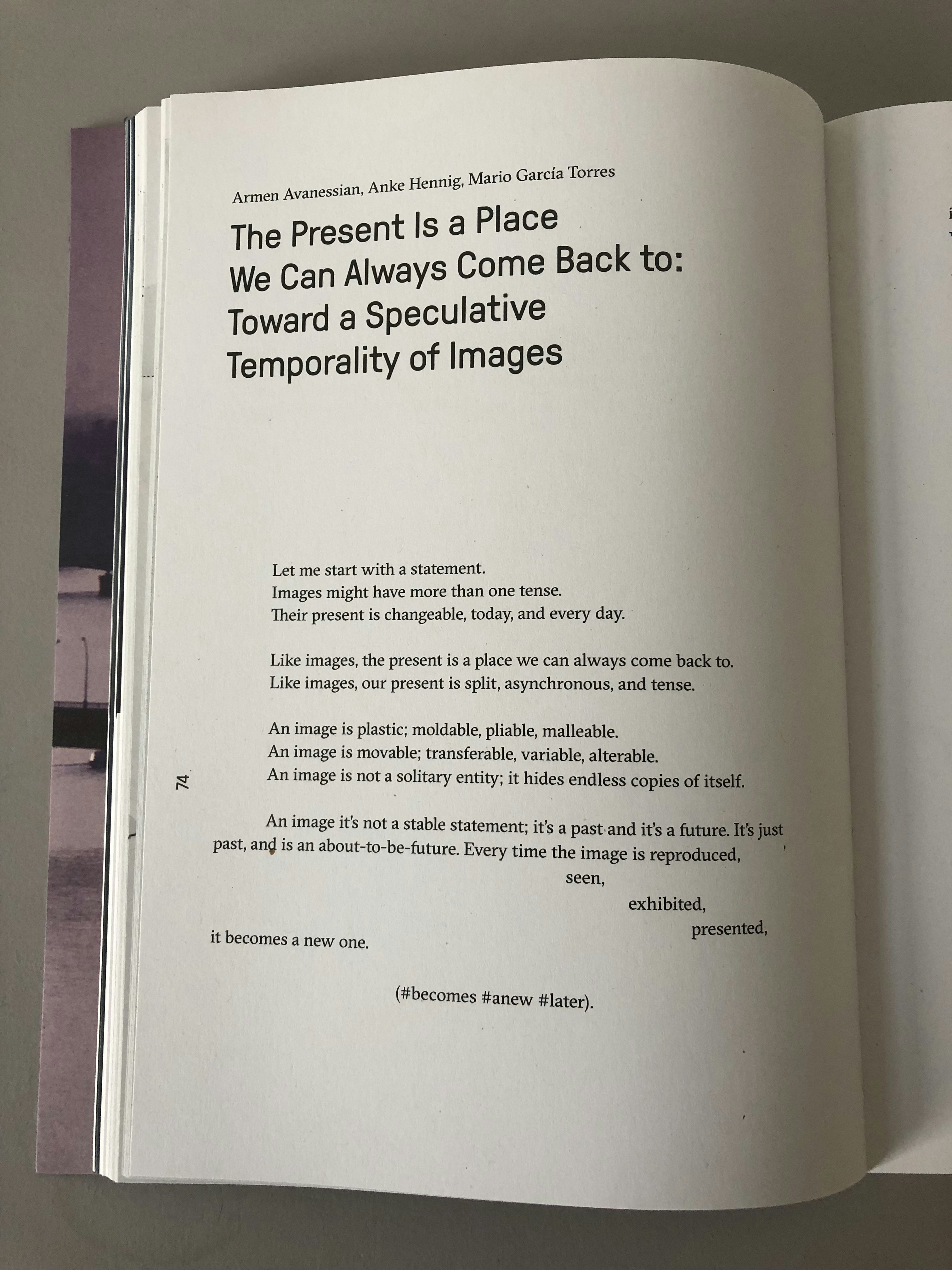Introduction
"The true content of a photograph is invisible, for it derives from a play, not with form, but with time." John Berger 1John Berger, “Understanding a Photograph,” in Understanding a Photograph, ed. Geoff Dyer (London: Penguin, 2013), 19.
We would like to continue a conversation we began last year with Mario Garcia Torres, a conversation about the temporality of photographic images. 2Armen Avanessian, Anke Hennig, Mario García Torres, "The Present Is a Place We Can Always Come Back to: Toward a Speculative Temporality of Images," in Marion García Torres, An Arrival Tale, ed. Daniela Zyman, Cory Scozzari (Berlin: Sternberg Press, 2017), 74–81.
Our idea, our attempt then was to get beyond the statement that, because they are recordings, photographic images institute a past. Of course, when a photographic image reaches us, we never fully forget that it was previously recorded by someone. Someone decided on this moment and transformed it, with the help of the camera, into a past moment.
The camera has detached the image of the space from space.
The camera has detached the image of the thing from the thing.
The camera has detached the image of the moment from the moment at which the camera was present.
In photographic images, the past is magical because we cannot see it anywhere else. We are tempted to say and write: whenever we see a past, we have an image before our eyes.
We wanted to see what happens when we change perspectives and start with the spectators for whom and in whose constantly changing present the photographic image is embedded. This present is a place we can always come back to.
There is, however, a question we didn't touch on in our conversation last summer, and it has been haunting us ever since. What about photographic futures? Do photographic images participate in the practice of preemption we encounter everywhere in an age of digital data control? Or can we imagine in its stead a photographic contemporaneity that would take the form of a contemporaneity with the future?
